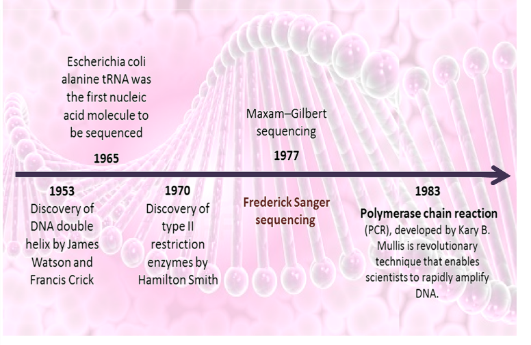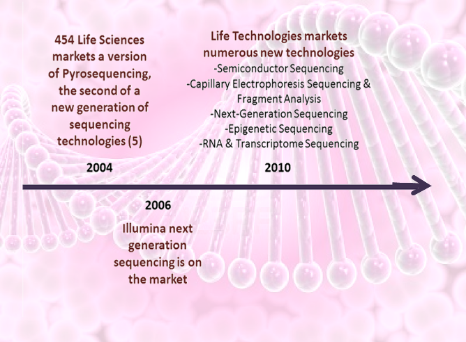It all started back in 1953 when Watson and Crick discovered the DNA double helix structure. After that all it took was one extremely innovative man, and the technology of sequencing sprang into life. One of the first DNA sequencing methods was developed in 1977, by Frederick Sanger. Sanger's technique became the basis for modern innovations, and since then the technology has advanced rapidly, becoming extremely popular and developing faster than fathomable. In 1990 a huge 13 year effort was created to decode the entire human genome. In 2011 the technology of DNA sequencing saved a child's life for the first time in history. Sequencing affects all aspects of biology, and it continues to be the most quickly evolving technology of our time, holding the key to numerous more advancements in the biological field. All information in timeline is from listed sources
Maxam and Gilbert developed a method of sequencing along the same time as Frederick Sanger. The Maxam-Gilbert sequencing however wasn't very efficient and used toxic chemicals. To learn more about Sanger sequencing and Polymerase Chain Reaction click on the timeline at the left |
The Human Genome Project made a huge impact on DNA sequencing technology. DNA sequencing was finally entering the modern phases. To learn more about the human genome project click on the timeline on the right |


